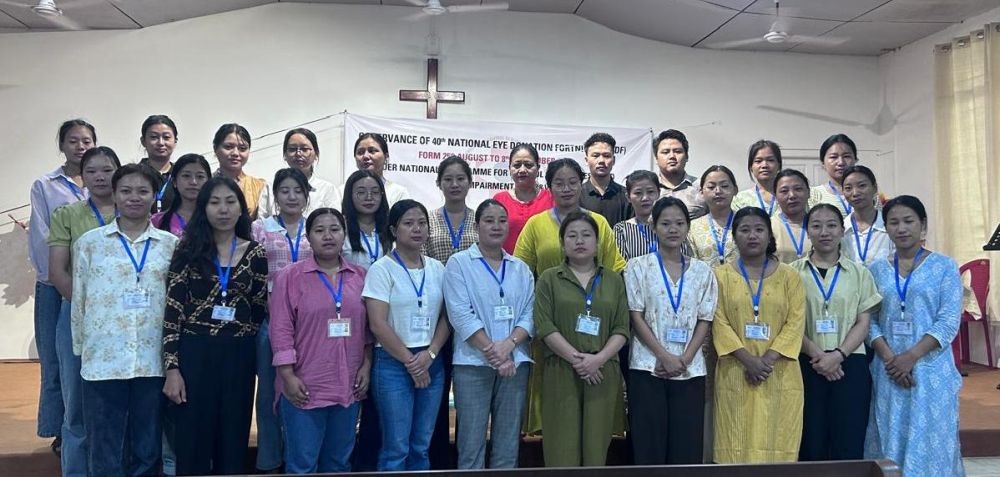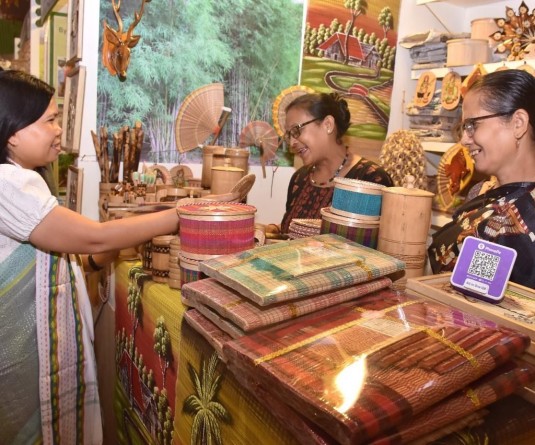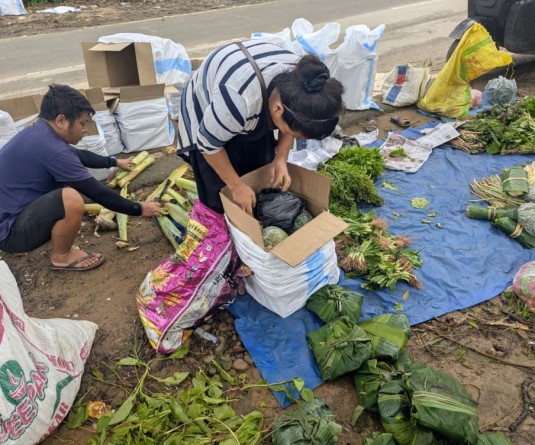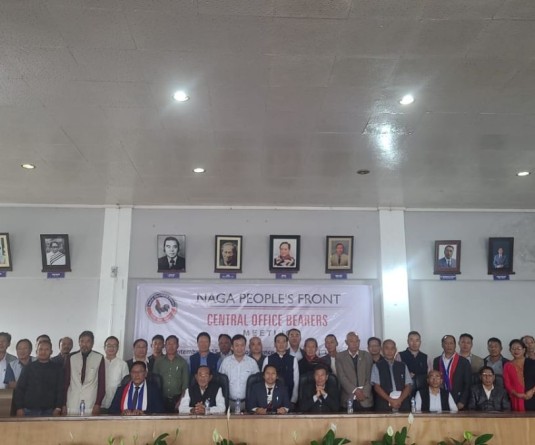Participants during the observance ofd the 40th National Eye Donation Fortnight 2025 in Dimapur.

DIMAPUR, SEPTEMBER 7 (MExN): Dimapur district joined the rest of the country in observing the 40th National Eye Donation Fortnight 2025 from August 25 to September 8 under the National Programme for Control of Blindness & Visual Impairment (NPCB&VI).
As part of the observance, a programme was held at Chapel Hall, District Hospital Dimapur, on September 6 to sensitize students of the Nursing School, Dimapur, on eye donation and corneal blindness.
Speaking on the occasion, Dr Asonla Aying, Senior Medical Officer and Nodal Officer, NPCB&VI, Dimapur, explained the process of eye donation and harvesting of cornea. She highlighted the common causes of corneal blindness, including accidental injuries, vitamin A deficiency—especially in children—and the use of traditional medicines.
She stressed the need for prompt medical attention in case of eye injuries and cautioned against self-medication. “Vitamin A deficiency in children is becoming a significant cause of blindness. The government has addressed this issue by including vitamin A in the national immunization schedule,” she said.
Dr Asonla warned that traditional practices such as applying mother’s milk, urine, or cow urine to cure infections could worsen the condition. Delayed treatment and the use of steroid drops without medical supervision were also noted as major causes of corneal blindness.
Emphasizing the importance of eye donation, she urged students to spread awareness and encourage pledging of eyes. She clarified that only the cornea is harvested after the demise of a donor and that the process does not cause disfigurement. Families of the deceased may also consent to cornea donation.
“Eye donation is not against any religion; in fact, it is regarded as the highest form of charity in many faiths,” she said, adding that creating awareness could help restore sight to those in need.
She underlined the urgent demand for cornea transplants and the shortage of donors, appealing to communities to bridge the gap by pledging their eyes and raising awareness.






